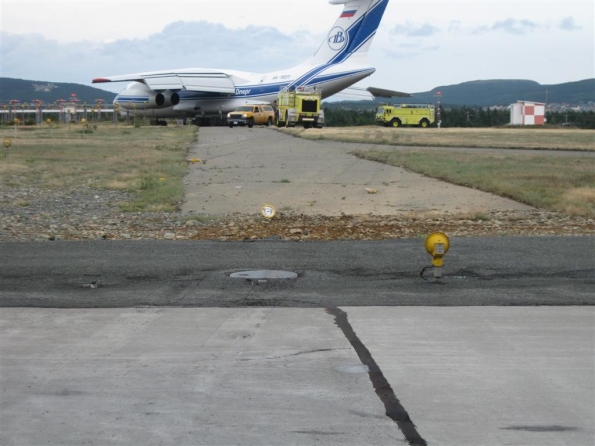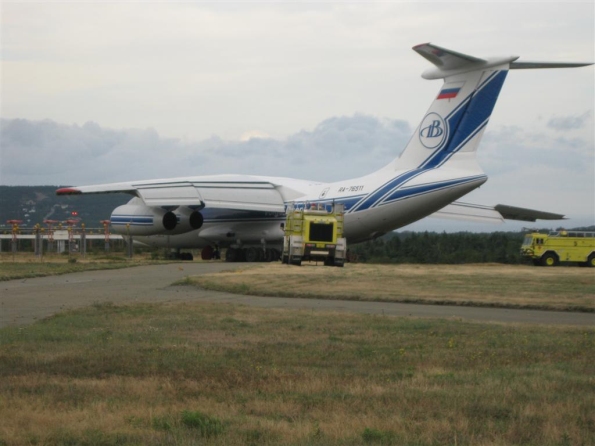Runway overrun
Volga-Dnepr Airlines
Ilyushin IL-76TD-90VD, RA-76511
St. John's, Newfoundland and Labrador
The occurrence
On 13 August 2012, a Volga-Dnepr Airlines Ilyushin IL-76TD-90VD aircraft (registration RA-76511, serial number 94-08), operating as flight VDA4118, departed Prestwick, Scotland, for St. John's International Airport, Newfoundland and Labrador, on a scheduled cargo flight with 10 crew members on board. An instrument landing system approach was carried out, and at 1612 Newfoundland Daylight Time, the aircraft touched down on Runway 11. Following touchdown, the crew was unable to stop the aircraft before it reached the end of the runway. The aircraft came to rest in the grass, the nose wheel approximately 640 feet beyond the end of the pavement. There were no injuries, and aircraft damage was limited to cuts and localized rubber melting on the main tires. The accident occurred in daylight hours. The runway overrun did not cause the emergency locator transmitter to activate.
Media materials
News release
Watchlist issue highlighted in 2012 runway overrun in St. John's, Newfoundland and Labrador
Read the news release
Deployment notice
Transportation Safety Board of Canada deploys a team of investigators to a runway overrun at St. John's International Airport in Newfoundland
Gatineau, Quebec, 14 August 2012 — The Transportation Safety Board of Canada (TSB) is deploying an investigation team to a runway overrun that occurred at the St. John's International Airport in Newfoundland. The TSB will gather information and assess the occurrence on this Watchlist issue. The Watchlist is a list of issues the TSB has determined to pose the most serious risk to Canada's transportation system.
Investigation information
Download high-resolution photos from the TSB Flickr page.
Class of investigation
This is a class 3 investigation. These investigations analyze a small number of safety issues, and may result in recommendations. Class 3 investigations are generally completed within 450 days. For more information, see the Policy on Occurrence Classification.
TSB investigation process
There are 3 phases to a TSB investigation
- Field phase: a team of investigators examines the occurrence site and wreckage, interviews witnesses and collects pertinent information.
- Examination and analysis phase: the TSB reviews pertinent records, tests components of the wreckage in the lab, determines the sequence of events and identifies safety deficiencies. When safety deficiencies are suspected or confirmed, the TSB advises the appropriate authority without waiting until publication of the final report.
- Report phase: a confidential draft report is approved by the Board and sent to persons and corporations who are directly concerned by the report. They then have the opportunity to dispute or correct information they believe to be incorrect. The Board considers all representations before approving the final report, which is subsequently released to the public.
For more information, see our Investigation process page.
The TSB is an independent agency that investigates air, marine, pipeline, and rail transportation occurrences. Its sole aim is the advancement of transportation safety. It is not the function of the Board to assign fault or determine civil or criminal liability.


